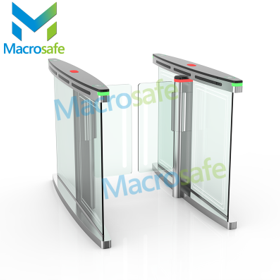Lobby Visitor Management: Enhancing Security and Efficiency

Effective lobby visitor management is essential for organizations to ensure the security and efficiency of their premises. The lobby serves as the first point of contact for visitors, making it crucial to implement protocols and systems that enhance security while streamlining the visitor check-in process. This article explores the significance of lobby visitor management in enhancing security and efficiency.
Visitor Registration and Identification:
One of the key aspects of lobby visitor management is visitor registration and identification. Traditionally, visitors would sign a paper logbook, but this method is susceptible to errors and can compromise security. To mitigate these risks, many organizations have turned to automated visitor management systems.
These systems leverage advanced technologies to digitize the visitor registration process. Visitors can enter their information directly into a self-service kiosk, which then issues a visitor pass or badge. This automated process improves efficiency by eliminating the need for manual data entry and reduces human errors.
Additionally, the use of turnstile machines can help enhance security in lobby visitor management. Turnstile machines act as physical barriers that regulate visitor entry and exit using access control technologies, such as RFID cards or biometric authentication. Integrating turnstile machines into the visitor management process ensures that only authorized individuals can access the premises, enhancing security and preventing unauthorized entry.
Visitor Check-in and Check-out:
Efficient visitor check-in and check-out processes are crucial for ensuring a seamless experience for both visitors and staff. Automated systems can streamline these processes, enabling visitors to quickly and easily check-in upon arrival and check-out when leaving the premises.
An effective lobby visitor management system can send automatic notifications to hosts, informing them of their visitor’s arrival. This eliminates the need for manual communication and enables hosts to prepare for the visitor’s arrival promptly. Similarly, visitor badges or passes can be automatically deactivated upon check-out, ensuring that visitors are accounted for and preventing any unwanted access.
Pre-registration and Pre-screening:
To further enhance efficiency and security, organizations can implement pre-registration and pre-screening procedures. By allowing visitors to pre-register online before their visit, organizations can collect information in advance and expedite the check-in process upon arrival.
Pre-screening procedures can include background checks or security assessments for higher-security areas. By conducting these checks before the visitor’s arrival, organizations can ensure that only pre-approved individuals gain access to sensitive areas. This reduces the time required for on-site screening and enhances overall security and efficiency.
Emergency Response:
Lobby visitor management protocols should also consider emergency response procedures. In the event of an emergency or evacuation, it is crucial to have systems in place to account for all visitors quickly and efficiently. Automated visitor management systems can provide real-time data on the number of visitors present in the premises, allowing emergency response teams to assess the situation accurately and take appropriate measures.
These systems can also send emergency alerts or notifications to visitors, guiding them to safety or providing crucial instructions. Improved communication during emergency situations enhances the overall security and safety of both visitors and staff.
Data Analytics and Reporting:
In addition to security and efficiency, lobby visitor management systems can provide valuable data analytics and reporting capabilities. By analyzing visitor data, organizations can gain insights into visitor patterns, peak visitation hours, and other relevant information. This data can then be used to optimize staffing levels, identify areas for improvement, and enhance the overall visitor experience.
Conclusion:
Effective lobby visitor management is essential for organizations to maintain security and efficiency in their premises. By implementing automated visitor registration systems, leveraging turnstile machines for enhanced security, streamlining check-in and check-out processes, implementing pre-registration and pre-screening procedures, ensuring emergency response readiness, and utilizing data analytics and reporting capabilities, organizations can create a secure and efficient lobby environment. These protocols and systems not only enhance security but also improve the overall visitor experience, demonstrating a commitment to safety, professionalism, and organizational excellence.


